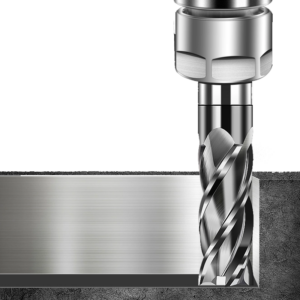What are the best end mills for aluminum? This is a question that every machining enthusiast asks when working with aluminum materials. Choosing the right end mills is crucial for achieving optimal results and productivity. In this article, we will explore the various factors to consider and highlight the advantages of certain end mills for aluminum applications.
Before delving into the best end mills for aluminum, it is essential to understand the characteristics of this versatile metal. Aluminum is known for its lightweight yet durable properties, making it a popular material for various industries such as aerospace, automotive, and construction. However, its unique properties require specific cutting tools to ensure efficient machining.
One of the top choices for machining aluminum is the carbide end mill. Carbide end mills are renowned for their hardness and durability, making them perfect for aluminum machining. The combination of carbide with a high helix angle and sharp cutting edges enables precise and rapid material removal.
The first advantage of carbide end mills for aluminum is their excellent chip evacuation capability. Aluminum tends to create long chips during the machining process, which can cause an array of issues such as machine downtime and poor surface finish. Carbide end mills with optimized flute designs effectively evacuate chips, preventing them from clogging the cutting path and ensuring smooth operations.
Furthermore, carbide end mills boast exceptional heat resistance. Aluminum has a high thermal conductivity, which generates excessive heat during machining. If not properly managed, this heat can lead to tool wear, inaccurate machining, and reduced tool life. The superior heat resistance of carbide end mills allows for prolonged tool life and enhanced productivity in aluminum applications.
Another type of end mill suitable for aluminum machining is the high-speed steel (HSS) end mill. While not as durable as carbide, HSS end mills offer advantages in certain situations. For instance, if the aluminum material being machined contains high levels of silicon, carbide end mills may struggle due to their brittleness. In such cases, HSS end mills with their higher toughness can be a more suitable choice.
Furthermore, HSS end mills are often more cost-effective compared to carbide end mills, making them an attractive option for budget-conscious machinists. They still provide satisfactory performance and are great for less demanding aluminum applications.
Apart from the type of end mill, the geometry and coatings also play crucial roles in achieving optimal results when machining aluminum. A high helix angle, typically around 45 degrees, is especially beneficial as it facilitates efficient chip evacuation and prevents chip recutting. Additionally, coatings such as aluminum titanium nitride (AlTiN) or titanium aluminum nitride (TiAlN) can enhance the performance of end mills for aluminum by reducing friction, prolonging tool life, and improving surface finish.
In conclusion, selecting the best end mills for aluminum involves considering factors such as material properties, desired machining results, and budget constraints. Carbide end mills with their excellent chip evacuation capability and heat resistance are ideal for most aluminum applications. However, HSS end mills can be a suitable alternative in certain scenarios. Remember to choose end mills with appropriate geometries and coatings to optimize performance. By understanding the advantages and applications of different end mills for aluminum, you can enhance your machining process and achieve superior results.

